For years, Nintendo gamers in North America have been denied the joys of Picross. With the exception of the Game Boy title, Mario's Picross, in 1995, we have missed out on Mario's Super Picross for the Super NES and some more Game Boy variations. Unless you imported video games back then, a gamer would have had to wait until 2007 when Picross DS was released to an unsuspecting public. The switch from a traditional control pad method to a touch-based one was a big hit, and the plethora of included puzzles and weekly downloadable content ensured that this puzzle game was going to be as loved as Peggle: Dual Shot, Planet Puzzle League and Tetris DS. Three years later, Nintendo DS owners get another shot at the game, this time presented in a completely different perspective with a new set of rules. While Picross 3D might sound complicated on paper, it proves to be a very solid puzzle game, despite a few missteps.
The basic concept behind Picross is easy enough to understand, and newcomers will immediately pick it up after a puzzle or two. To understand the 3D version, though, you'll need to understand how the 2D version works. The user is presented with a grid flanked by a horizontal and vertical set of numbers. The vertical numbers represent the number of blocks in that column that need to be filled in sequentially while the horizontal numbers represent the blocks in the row that also need to be filled in sequentially. Using the numbers in the row to correspond with the numbers in the column, the user can determine which blocks need to be filled and which ones can be omitted. Once the appropriate blocks are filled in, a pixel-based picture will appear, and the user can move on to the next puzzle. While the early puzzles can seem easy because of the smaller grids and one number per row or column, the later puzzles become more difficult. Multiple numbers will occupy a row or column, indicating that the blocks that need to be filled in must be done in pieces rather than in sequence.
Picross 3D takes the basic concept and adds a new dimension which, in turn, adds more rules to the game and changes a few familiar ones. With the grid being transformed into blocks, the horizontal and vertical numbers now represent the length and width of the block while a new dimension, depth, is added to the mix. The numbers now appear on the faces of the blocks and perform the same as before, giving you an indication of how many blocks need to be spared from breaking in order for the puzzle to take shape.
The addition of depth means that blocks on the inside of the structure must be filled in, and this is where the slicing tool comes into play. You can use it to temporarily slice into the structure from one of four directions in order to mark or break cubes in the puzzle's interior. Finally, shapes around the numbers are used to indicate marked cubes. The circle indicates that the number of marked cubes will be split into two groups, and a square around the number indicates three or more groups. This new take on the classic concept works well. It works out differently than the 2-D version, but once you grasp how it works, you'll be used to the method in no time. More importantly, the game carries with it an addictive quality that compels you to keep playing once you finish a puzzle. The desire to play "just one more match" right after you fail or finish a puzzle is a trait that all puzzle games hope to have. With about 365 puzzles on the Picross 3D cart alone, that trait is surely needed if one were to try to finish what the game has to offer.
There are three modes to the game. Puzzles is a pretty self-explanatory mode. There are five levels of difficulty, starting with training, which isn't mandatory but will help you further understand the concepts behind this new take on the old game as well as contribute to your completed puzzle count. Each difficulty level brings with it several stages consisting of a set number of puzzles. Each puzzle solved gives you a star, and bonus stars can be earned for completing puzzles within the green time limit and completing them without mistakes. Earning a set number of stars gives you the ability to complete bonus puzzles, which also add to the completed puzzle count. While every stage gives you the ability to make up to five mistakes and a generous time limit before the level ends in failure, you will encounter a few puzzles with a shorter time limit or ones where one mistake costs you the game.
The Gallery mode shows off everything you've unlocked, from backgrounds to animation pieces, while My Picross mode holds a few other options. Original is where you can create puzzles of your own. You can lay down blocks of any size and sculpt them to whatever form you want while the system automatically designates the proper numbers and shapes for you. Puzzles can then be saved locally and shared simultaneously with up to other four users in your area or uploaded for Nintendo-hosted contests. You can also use the Wi-Fi connection to download other puzzles made by Nintendo or contest winners, and you can save up to 240 of them in your cart.
Finally, you can demo the game for up to four users at a time so they can sample it and see if they want it for themselves. The creation and sharing aspect is great and follows both Picross DS and WarioWare D.I.Y. in terms of how they handle such content, but the only drawback is that players can't share those puzzles online with others outside of contest entries. With WarioWare D.I.Y. letting people share their creations online, it seems like a step backward for this game to not be able to perform the same action.
Good controls are pivotal, and Picross DS certainly has good controls. Unlike the original game, this one uses a combination of touch-screen and d-pad (or face buttons, if you are left-handed) to control all of the action. Using the touch-screen alone, you can twist and turn the puzzle to gain a better perspective, and you can also use the slicers to manipulate your way inside the puzzle. Holding Up on the d-pad and using the stylus will cause you to break cubes while Right on the d-pad will mark cubes instead. During your puzzle creation process, the controls are the same, but holding left on the d-pad will put cubes on the board instead. Those used to the 2-D version of Picross will be taken aback by the combined use of touch-screen and d-pad, but the adjustment period is very short and it soon becomes intuitive enough. More importantly, the touch-screen is accurate, and you won't find yourself hitting the wrong blocks due to the touch-screen misreading your actions. All in all, the controls are close to perfect for the title.
Graphics rarely make or break a puzzle title, and that is certainly the case here. The puzzle blocks are simple to look, and the numbers are rendered very clearly. Once the puzzle is solved, it animates nicely and looks good for what amounts to crude polygonal art. The same can be said for the mascot on the top screen, even when it gets extremely excited that you solved the puzzle or disappointed that syou made a mistake. Like most puzzle games, the graphics won't become a source of disappointment.
The sound, while not very important to the title, is rather good. The music is both whimsical and relaxing, never making you feel the pressure of time running out even when it is. The only caveat to the music is that while it doesn't prove to be distracting, there are only a few tunes in the game, though you'll never notice unless you're paying more attention to the sound than the game. The effects are pretty basic. There's nothing special to be heard from breaking cubes, and while the effect doesn't sound amazing, it isn't bad, either. Overall, the sound works well enough and doesn't detract from the experience.
Picross 3D may be a bit harder to grasp initially when compared to Picross DS, but that doesn't mean it's any less fun. The new puzzles provide a great challenge, and the constant flow of downloadable puzzles means that there won't be an end to the game anytime soon. If the game would have allowed you to upload your own puzzles outside of contests, it would have been much better. As it stands now, this is a worthy successor to the original DS title, and puzzle fans should definitely pick it up.
Score: 8.8/10
More articles about Picross 3D


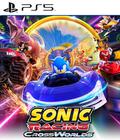

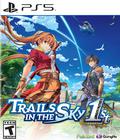
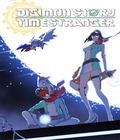
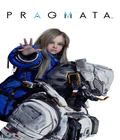

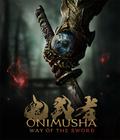


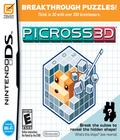 Picross 3D moves the action into three dimensions and blends the logical challenge of a number-based puzzle with the excitement of discovering the hidden images within.
Picross 3D moves the action into three dimensions and blends the logical challenge of a number-based puzzle with the excitement of discovering the hidden images within.









